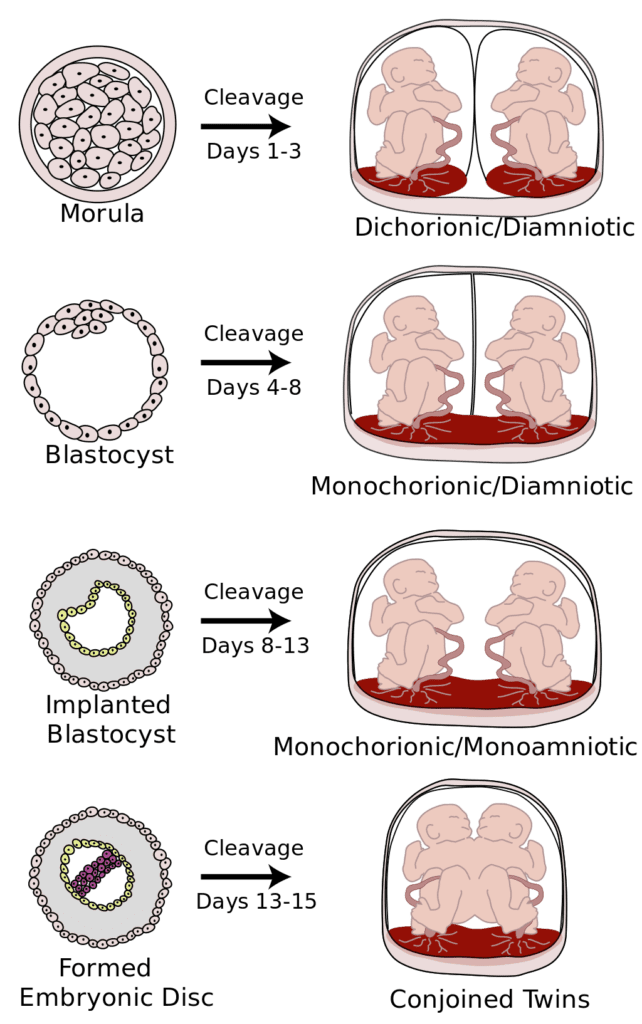
Original Launch Date: 03/01/23
Expiration Date: 03/01/25
ACCME PARS: 14137
This activity is intended for healthcare providers delivering care to women and their families.
After completing this activity, the participant should be better able to:
1. State the ideal time to date a twin pregnancy using ultrasound
2. Discuss monitoring of twin pregnancies using ultrasound
Estimated time to complete activity: 0.5 hours
Postgraduate Institute for Medicine (PIM) requires faculty, planners, and others in control of educational content to disclose all their financial relationships with ineligible companies. All identified conflicts of interest (COI) are thoroughly vetted and mitigated according to PIM policy. PIM is committed to providing its learners with high quality accredited continuing education activities and related materials that promote improvements or quality in healthcare and not a specific proprietary business interest of an ineligible company.
The PIM planners and others have nothing to disclose. The OBG Project planners and others have nothing to disclose.
Faculty: Susan J. Gross, MD, receives consulting fees from Cradle Genomics.
Planners and Managers: PIM Planners have nothing to disclose
Participants must read the learning objectives and faculty disclosures and study the educational activity.
If you wish to receive acknowledgment for completing this activity, please complete the test and evaluation. Upon registering and successfully completing the test with a score of 100% and the activity evaluation, your certificate will be made available immediately.

In support of improving patient care, this activity has been planned and implemented by the Postgraduate Institute for Medicine and The ObG Project. Postgraduate Institute for Medicine is jointly accredited by the Accreditation Council for Continuing Medical Education (ACCME), the Accreditation Council for Pharmacy Education (ACPE), and the American Nurses Credentialing Center (ANCC), to provide continuing education for the healthcare team.
Postgraduate Institute for Medicine designates this enduring material for a maximum of 0.5 AMA PRA Category 1 Credit(s)™. Physicians should claim only the credit commensurate with the extent of their participation in the activity.
The maximum number of hours awarded for this Continuing Nursing Education activity is 0.5 contact hours.
Read Disclaimer & Fine PrintTwin pregnancies are followed more closely than singleton pregnancies due to higher risk for complications such as twin-twin transfusion syndrome, selective fetal growth restriction, and preterm labor. Ultrasound is a non-invasive and highly useful tool for screening, diagnosis, and guiding management of these potential complications. Ultrasound monitoring protocols vary between different types of twin pregnancies.

Image by Kevin Dufendach, MD (2008). Used by permission. CC BY 3.0
Lambda or Delta Sign Indicating Dichorionic Twins

T Sign Indicating Monochorionic Twins

Uncomplicated monochorionic twin pregnancy (see SMFM checklist in ‘Learn More – Primary Sources’ below)
Note: ISUOG guidelines do include umbilical artery Doppler monitoring as part of routine surveillance | ACOG/ SMFM considers evidence to be unclear for uncomplicate monochorionic twins
Uncomplicated dichorionic twin pregnancy
Most twin pregnancies will have good outcomes. However, diligence is required, especially in the case of monochorionic twins due to risk for twin-twin transfusion syndrome (TTTS) and twin anemia polycythemia sequence (TAPS). Monochorionic twins may have potentially significant vascular anastomoses such that the twins share a common vasculature. Significant risks for dichorionic twins include preterm labor, medical complications due to increased placental mass (e.g., preeclampsia and GDM) and selective growth restriction. Different centers will have different protocols for labeling twin A vs twin B. The important point is to be consistent with labeling.
SMFM Special Statement: Updated checklists for management of monochorionic twin pregnancy
ISUOG Practice Guidelines: role of ultrasound in twin pregnancy
ACOG SMFM Committee Opinion 831: Medically Indicated Late-Preterm and Early-Term Deliveries
SMFM Consult Series #72: Twin-twin transfusion syndrome and twin anemia-polycythemia sequence
Maternal Fetal Medicine Specialist Locator-SMFM
Take a post-test and get CME credits
TAKE THE POST TESTThe ObG Project is in no way affiliated with any outside entity or professional organization
Are you an
ObG Insider?
Get specially curated clinical summaries delivered to your inbox every week for free
Please log in to ObGFirst to access this page
OBG Project CME requires a modern web browser (Internet Explorer 10+, Mozilla Firefox, Apple Safari, Google Chrome, Microsoft Edge). Certain educational activities may require additional software to view multimedia, presentation, or printable versions of their content. These activities will be marked as such and will provide links to the required software. That software may be: Adobe Flash, Apple QuickTime, Adobe Acrobat, Microsoft PowerPoint, Windows Media Player, or Real Networks Real One Player.
This educational activity may contain discussion of published and/or investigational uses of agents that are not indicated by the FDA. The planners of this activity do not recommend the use of any agent outside of the labeled indications.
The opinions expressed in the educational activity are those of the faculty and do not necessarily represent the views of the planners. Please refer to the official prescribing information for each product for discussion of approved indications, contraindications, and warnings.
Participants have an implied responsibility to use the newly acquired information to enhance patient outcomes and their own professional development. The information
presented in this activity is not meant to serve as a guideline for patient management. Any procedures, medications, or other courses of diagnosis or treatment discussed or suggested in this activity should not be used by clinicians without evaluation of their patient’s conditions and possible contraindications and/or dangers in use, review of any applicable manufacturer’s product information, and comparison with recommendations of other authorities.
It appears you don't have enough CME Hours to take this Post-Test. Feel free to buy additional CME hours or upgrade your current CME subscription plan
You are now leaving the ObG website and on your way to PRIORITY at UCSF, an independent website. Therefore, we are not responsible for the content or availability of this site
